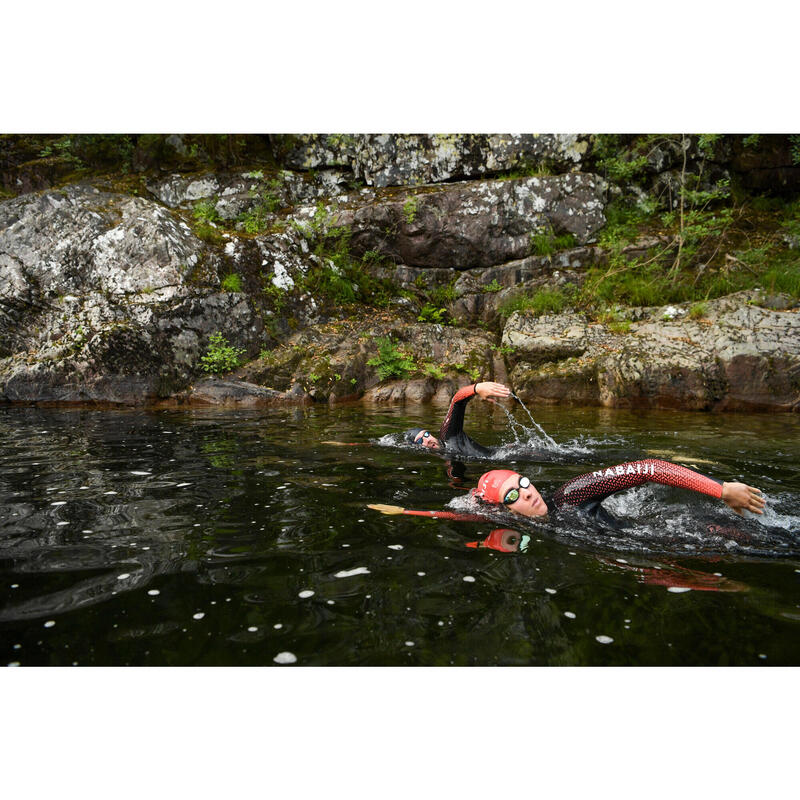Usage advice
To avoid chafing on the neck and chafing points, use petroleum jelly or a mixture of 50% petroleum jelly and 50% lanolin.
Threading advice
The Glide-Skin component used on this suit is highly flexible and elastic, but also more fragile. During donning, do not use fingernails or extreme stretching. Put on arms and legs gradually.
*check our tips for putting on a suit!
Component:
Torso and legs: GLIDE SKIN 4 neoprene mm / 5mm plates on torso and abdomen
Arms: GLIDE SKIN 2 neoprene mm
GBS seams: sewn and glued (waterproof)
Why is a neoprene wetsuit difficult to put on?
Putting on a neoprene wetsuit can seem a daunting task, especially for those who have never used one before. Neoprene wetsuits need to be tightened to prevent water penetration during practice. If the wetsuit is wide, the swimmer will feel colder and will also be more exposed to skin irritation as the wetsuit moves during the session.
*check out our wetsuit fitting tips!!
I feel my muscles work differently when I use a neoprene wetsuit. Is this normal?
If you're in your first open-water sessions with a wetsuit, it's normal to feel a different muscular workout because the sleeve offers more buoyancy to the arms and so we have to add "extra" force to plunge the arm into the water. This sensation will disappear after a few sessions.












